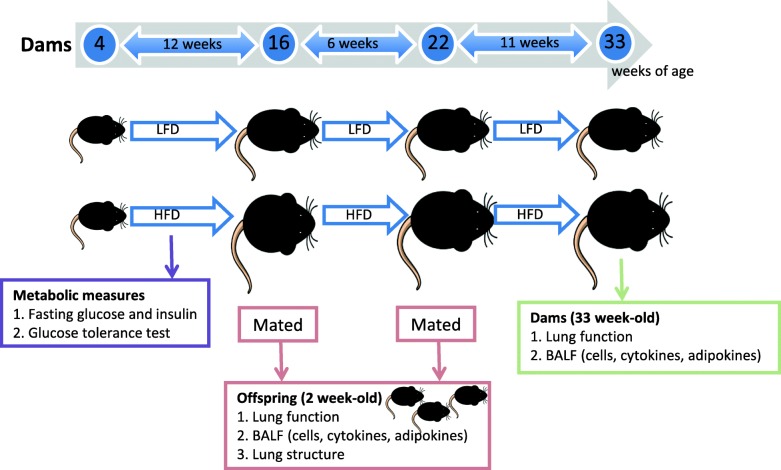Fig. 1.
Overview of the experiment. From 4 weeks of age, C57Bl/6 J female mice (n = 28) were separated into 2 treatment groups and fed either a low fat diet (LFD, n = 14) or high fat diet (HFD, n = 14). Fasting glucose and insulin levels were determined in these female mice after being fed the diets for 5, 7, 9, 11 and 18 (glucose only) weeks. A glucose tolerance test (GTT) was performed after female mice had been fed either diet for 11 weeks. Female mice were first mated with C57Bl/6 J male mice, after dams had been fed either diet for 12 weeks. Three weeks later, offspring were born. Dams were re-mated 1 week after their first litters were removed at 2 weeks of age. The lung function of all surviving offspring (of both pregnancies) was measured when these mice reached 2 weeks of age. After lung function assessments were completed, BALF was collected from most neonates to determine the proportions of major cell types, and levels of cytokines and adipokines. In a small subset of the neonates, lungs were fixed for structural assessment. After eating the LFD or HFD for 29 weeks, the dams had their lung function and responsiveness to methacholine measured, with BALF also collected to determine the proportions of major cell types, and levels of cytokines and adipokines

